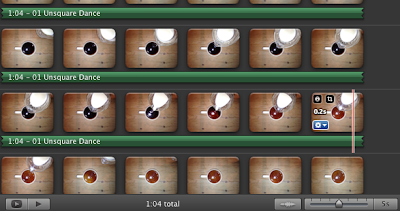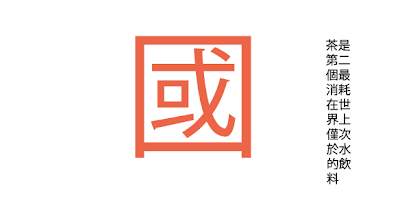This is a stop motion film I made just experimenting with moving image, just showing a quick 1 minute process of making tea, I think it turned out alright for the first stop motion I've made, generally experimenting with interesting ways to show the stages of making a cup of tea:
'A History Of...'
Friday, 12 October 2012
'A HISTORY OF...'//'MY STOP MOTION TEA FILM'//OUGD504-SUMMER
FINAL STOP MOTION FILM FINISHED:
This is a stop motion film I made just experimenting with moving image, just showing a quick 1 minute process of making tea, I think it turned out alright for the first stop motion I've made, generally experimenting with interesting ways to show the stages of making a cup of tea:
This is a stop motion film I made just experimenting with moving image, just showing a quick 1 minute process of making tea, I think it turned out alright for the first stop motion I've made, generally experimenting with interesting ways to show the stages of making a cup of tea:
Tuesday, 9 October 2012
'A HISTORY OF...'//FILM DEVELOPMENT//OUGD504
FILM DEVELOPMENT:
I have started putting my stop motion together on iMovie, I took constant photos of the process so when they run together it will run smoothly through the tea making course.
The song I have chosen to accompany the stop motion with is Dave Brubeck's Unsquare Dance. I think this has a good tempo for the movement going on in the film and the specific part it ends on compliments the final clip.
The stop motion takes you through the stages of making a cup of tea, starting with the tea bad crawling slowly from one corner of the screen to the cup and up into it.
The next clip focuses on the tea pot edging forward to pour in the boiling water.
The next stages show the spoon appearing and sugar appearing on the spoon, the spoon is put into the cup and rotates, stirring the tea twice.
The final stage shows the subject drinking the tea, and placing it down on the table as the shot zooms in to reveal the empty cup.
I have started putting my stop motion together on iMovie, I took constant photos of the process so when they run together it will run smoothly through the tea making course.
The song I have chosen to accompany the stop motion with is Dave Brubeck's Unsquare Dance. I think this has a good tempo for the movement going on in the film and the specific part it ends on compliments the final clip.
The stop motion takes you through the stages of making a cup of tea, starting with the tea bad crawling slowly from one corner of the screen to the cup and up into it.
The next clip focuses on the tea pot edging forward to pour in the boiling water.
The next stages show the spoon appearing and sugar appearing on the spoon, the spoon is put into the cup and rotates, stirring the tea twice.
The final stage shows the subject drinking the tea, and placing it down on the table as the shot zooms in to reveal the empty cup.
Friday, 5 October 2012
'A HISTORY OF...'//FILM IDEAS AND PHOTOS//OUGD504
FINAL FILM:
For my final product I have decided to make a stop motion roughly lasting about a minute based on making a cup of tea. I have decided to keep it really simple, one subject in the frame, to have the cup constantly in the same place as different stages of making a cup of tea take place.
These are some initial photographs I took to get an idea of how the film would look:
For my final product I have decided to make a stop motion roughly lasting about a minute based on making a cup of tea. I have decided to keep it really simple, one subject in the frame, to have the cup constantly in the same place as different stages of making a cup of tea take place.
These are some initial photographs I took to get an idea of how the film would look:
Thursday, 4 October 2012
'A HISTORY OF...'//'TEA PRESENTATION'//OUGD504-SUMMER
This is the presentation I put together to present for our crit:
I felt this is a subject that can develop a wide depth of research, from the history of tea/ tea culture to the success of its produce. The significance of tea differs within each culture which I thought would be interesting to look into.
These are some of the categories I looked into whilst researching
-tea cultre is China, Japan, Russia and the UK
-statistics facts and figures about tea consumption
-the history of tea, where it was discovered and how it has come to be such a popular beverage
-I looked into Twinings and their history etc.
-Tassology, this is a fortune telling method used with tea leaves
For my secondary research I found the website Tea council Uk very useful, it had a lot of information about the history of tea and were it originated from…
According to legend, in 2737 BC, a Chinese emperor Shen Nung was sitting beneath a tree while his servant boiled drinking water, when some leaves from the tree blew into the water. Shen Nung, a renowned herbalist, decided to try the infusion that his servant had accidentally created. Its impossible to know if that story is true but tea drinking became established centuries ago. it is the second most consumed beverage in the world, after water. I also touched on the subject tea v's coffee, the popularity of coffee has increased but tea consumption equals more than coffee, soft drinks and alcohol combined. China consumes the most tea in the world, in 2010 china consumed tea leaves equal in weight to 26 titanics.
I got in contact with Twinings to ask if they could send me anything to help further my research or if there was anywhere I could visit, the only place they said was the main store on the Strand which had some antique tea caddies and old tea packaging in glass cabinets which were good for photographing for primary research. The tea house and tea palace were both tea shops in covent garden that helped when trying to find primary research. i visited China town to try and get a bit more of an insight into the chinese the culture, i managed to find a couple of photographs but I didn't find anything relevant to tea culture. I also wrote to tetleys to see if they could send me any further information on their tea, they sent me a print out booklet on the process of growing and blending tea and the various countries its produced in which was helpful in terms of seeing the development of production.
these are some photographs I took whilst looking around various tea shops and china town, I've used a couple of these in my final outcome
I firstly started of wanting to make a poster with interesting tea facts, my original idea was to use tea bags and transfer letraset onto them with interesting facts and scan them in, however it didn't work as well as I wanted it to, and the idea seemed better than the finished result. I then decided to create a set of postcards with information about chinese and japanese tea culture and ceremonies, the health benefits of tea and general tea facts, i thought they could possibly work as a series that you get free with a box of tea bags..
81 per cent of British adults drink tea but the number is declining amongst young people..possibly some kind of light hearted campaign to bring tea culture back to the younger generation.
THIS WAS THE FEEDBACK I GOT FROM MY PRESENTATION GROUP:
THIS WAS THE FEEDBACK I GOT FROM MY PRESENTATION GROUP:
We had to do our presentation about the subject matter we looked into over summer to a group of five people, this was the feedback:
- good statistical research
- good photography
- very good experimenting
- loads of research
- very good final outcome
- clearly has done the research and knows the facts
- explored different ways of researching
- good designs/ good ideas
- interesting facts
- nice finals
- plenty of information
- I love tea
- interesting facts
- lots of information
- well informed and rehearsed
- nice primary research
- final outcome looks very well informed
'A HISTORY OF...'//'PRINTED DESIGNS'//OUGD504-SUMMER
Wednesday, 3 October 2012
'A HISTORY OF...'//'DESIGN IDEA AND DEVELOPMENT'//OUGD504-SUMMER
I instead decided to look into making a set of postcards that would give information about tea/ the health benefits, maybe something that could come free when purchasing a box of tea bags as a series/collection to get young people more interested in drinking tea.
I thought a good idea would be to use Chinese and Japanese language and symbols as Tea culture is very big in those countries
DEVELOPMENT OF POSTCARDS:
I started by looking at the the Chinese language and looking at symbols and words that I could use to make the postcards look interesting and fit in with the theme of Chinese tea culture and tea in general.
I thought a good idea would be to use Chinese and Japanese language and symbols as Tea culture is very big in those countries
DEVELOPMENT OF POSTCARDS:
I started by looking at the the Chinese language and looking at symbols and words that I could use to make the postcards look interesting and fit in with the theme of Chinese tea culture and tea in general.
I used some photos that I took from my primary research to go into the postcards:
I added a couple of symbols and designs:
THESE ARE MY SET OF POSTCARDS:
'A HISTORY OF...'//'DESIGN IDEA AND DEVELOPMENT'//OUGD504-SUMMER
An idea for my final graphic product when considering set, series and sequence is to use tea bags with letraset printed on them with lots of different tea facts joined to one big image to make a poster:
I tried to find the most interesting facts and stats that would be quick and easy to read:
I don't think the poster worked as well as I wanted it to, the idea was something I really wanted to develop and thought using the tea bags with letraset would of looked good especially as I would be incorporating the actual tea bag in my work. However, the writing wasn't very legible and for it to look impressive I thought I would need more than sixteen tea bags and each individual tea bag took too long to transfer the fact on to.
I have decided to focus on a different part of tea and tea culture for my final design, possibly something to do with Tea ceremonies or the health benefits of tea/ green tea/ herbal tea etc. I thought about making a set of postcards with tea facts and information that would be offered as a set when buying a box of tea bags. I feel this could be a good way of introducing tea and tea culture to the younger generation. 81 per cent of British adults drink tea but the number is declining due to the younger generation.
THIS IS THE FINAL PRINT (LEFT)
I think the idea was interesting but the final printed product didn't work the way I wanted to, I could possibly try on a larger scale or think of other interesting ways to transfer type onto tea bags.
Subscribe to:
Comments (Atom)


















































